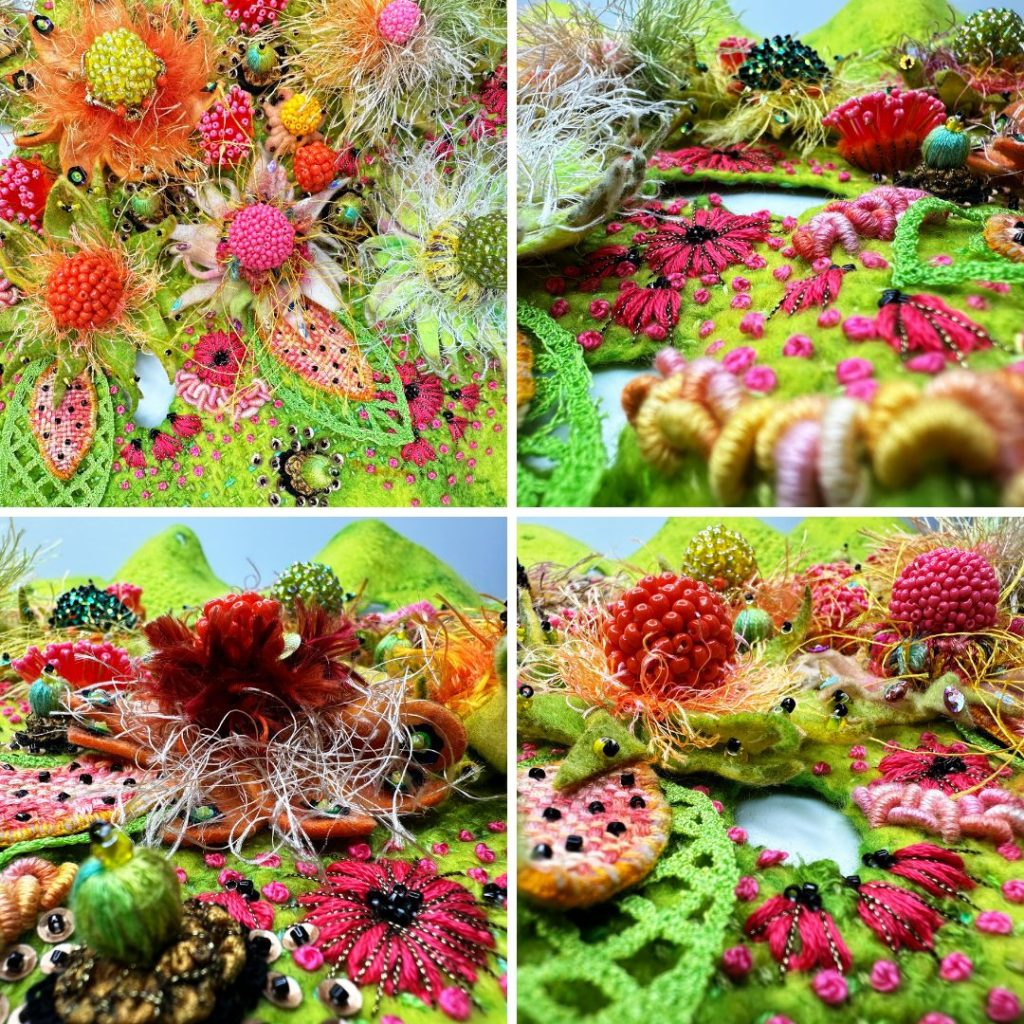It doesn’t take much, I can tell you, to enthuse me to create a new piece of work.
Colour, a simple idea, a piece of beautiful fabric or threads, unusual embellishments, or a combination, it doesn’t matter.
What matters is creating and enthusiasm.
I like to begin a new work with a variety of elements laid out before me – I may use them, I may not, but I’ve found it inspires me to have these visuals in front of me pushing me to think.
But what about process?
Do I draw, sketch, and research to create?
Sometimes I do.
Or do I simply wing it and work purely using my instincts?
Sometimes I do.
Or do I make simple embroidered slips using them as my basis to build and layer a design?
Yes, sometimes I do.
So there are three very distinct variations on my process, all of which I use from time to time – and they can all work.
Research and drawing will lead to a detailed design with depth and a storyline that viewers should easily understand. The success of this method of working is very high.
Winging it produces wonderfully spontaneous, conceptual work, but it takes a lot of self-belief and self-critiquing to make it work.
Making embroidered slips is somewhere between the two, offering that spontaneity to create a storyline or feature, knowing that you can build on them.
What’s an embroidered slip?
Below are some of the embroidered slips that began this new work.

A slip is a medieval term used to describe a small embroidery that was applied to a garment or fabric and was used to create embellishments on difficult-to-use fabrics and pieces of clothing, the same pattern could be replicated and stitched by several embroiderers at the same time to help speed up the work.
This is a process I’ve been using a lot lately because it gives me freedom.
Freedom to create and move them around the design before I need to commit and freedom to work on highly dimensional embroideries.
Once the slips were applied, I then used embroidery, beading, and myriad threads to build even more colour, texture, and interest in the work.

Instinct is something I rely on heavily, supported by simple design theory.
You know if something is working, or not, and I’m always looking to create flow, energy, and pizzazz.
Check out this short video on my YouTube channel showcasing even more beautiful images of this new work.
It began with several handpainted felt slips, including the ones above, that I laid out in a gentle arc down the length of the felt. That wonderful green handmade felt had numerous voided areas that just seemed to make the work even more interesting, but basically, I knew I needed some large areas of fairly heavy embroidery to help carry those large slips.
Lazy daisy, Bullion stitch, and French Knots were perfect choices, plus I included some free-machined leaves topped with hand-embroidered woven leaves to help create even more amazing texture and visual interest.
Small black beads and a black and gold embroidery thread help to unify the design and I used a beautiful green silk to wrap small wooden beads that sit atop gold-painted suffolk puffs surrounded by Fly stitch.
Stands of orange bugle beads topped with pink seed beads stand to attention on small orange felt rounds finished with Blanket stitch and throughout the work, flows of French knots help tie everything together.
I didn’t draw a pattern, research a topic, or work completely unknowingly – I let the work breathe and speak.
It may be challenging, but it’s also very liberating, helping to promote self-reliance and confidence.

All views and opinions expressed are my own, except where acknowledged information is included from other sources.

